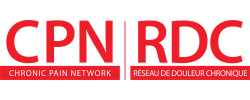| Return |
Patient Evidence Summary

Doctor, is neuromuscular exercise helpful for chronic musculoskeletal pain?
Supervised neuromuscular exercise reduced musculoskeletal pain in adults over age 65 who live in the community compared to no exercise.
What is the evidence?
SUMMARY OF FINDINGS
Neuromuscular exercise vs wait list for treatment of chronic musculoskeletal pain
| Outcome | Neuromuscular Exercise | Wait List | Effect |
|---|---|---|---|
Brief Pain Inventory Score* at 6 weeks (compared to Week 0) | Score dropped from average of 4.4 to 3.1 | Score did not change (4.6) | Pain score in people who had neuromuscular exercise dropped by an average of 1 more point than people on the wait list |
| Brief Pain Inventory Score* at 12 weeks (compared to Week 0) | Score dropped from average of 4.4 to 2.7 | Score dropped from average of 4.6 to 4.1 | The improvement in pain score in the neuromuscular exercise group lasted out to 12 weeks |
*Brief Pain Inventory is a score used to measure severity of pain and how much it interferes with physical activity, mood, ability to do daily activities, sleep, and enjoyment of life (scores range from 0 to 10; higher score = more pain or interference). A change in score of at least 1 point is considered an improvement that most people would notice
What kind of study was this?
This was a randomized controlled trial (RCT).
Who? This study included 72 adults (average age 70 years; 93% female) over age 65 with chronic (longer than 3 months) musculoskeletal pain (most with pain in multiple sites including knee, back, shoulder and neck) who lived in the community and could walk 10 metres. People who had musculoskeletal pain due to inflammatory rheumatic disease, a history of major joint replacement or spinal surgery, stroke or major surgery in the previous 6 months were excluded.
What? The study compared neuromuscular exercise with being on the wait list for neuromuscular exercise. There were no restrictions in either group on using other interventions during the study period.
Neuromuscular exercise | vs | Wait List |
|---|---|---|
Neuromuscular exercise classes for 60 minutes twice a week for 6 weeks conducted by trained instructors. The exercises focused on: functional performance; posture control; muscle strength in arms and legs; functional trunk and joint stability; and gait. No machines or weights were used. At the end of the 6 weeks, participants were given a pamphlet with instructions on how to continue the exercises at home. | A generic exercise pamphlet was provided for self-reading and practice. They were offered the same neuromuscular exercise classes as the other study group only after completion of the study. |
Why was this research done?
Often people with pain reduce their activity to see if pain will resolve. However, exercise may have health benefits if it can be carried out without making pain worse and may, in fact, improve pain. Neuromuscular exercises are non-weight bearing movements designed to improve strength and balance in positions that mimic conditions in real life. The muscles that support joints are trained to work better together. The researchers in this study wanted to know if neuromuscular exercise twice a week would reduce chronic musculoskeletal pain in older adults who are well enough to live in the community. They found that people who had neuromuscular exercise had a small reduction in pain after 6 weeks that lasted out to 12 weeks. It would be useful to compare this exercise with other forms of exercise.
This Evidence Summary is based on the following article:
Sit RWS, Choi SYK, Wang B, et al. Neuromuscular exercise for chronic musculoskeletal pain in older people: a randomised controlled trial in primary care in Hong Kong. Br J Gen Pract. 2021 Feb 25;71(704):e226-e236. doi: 10.3399/bjgp20X714053. Print 2021. PubMed
Published: Thursday, September 2, 2021
Please note that the information contained herein is not to be interpreted as an alternative to medical advice from a professional healthcare provider. If you have any questions about any medical matter, you should consult your professional healthcare providers, and should never delay seeking medical advice, disregard medical advice or discontinue medication based on information provided here.
|
This Evidence Summary was printed from the PAIN+ CPN website on 2025/04/01. To view other Evidence Summaries or to register to receive email notifications about new Evidence Summaries, please visit us at https://www.painpluscpn.ca/Articles/EvidenceSummaries |

|






 , McMaster University
, McMaster University